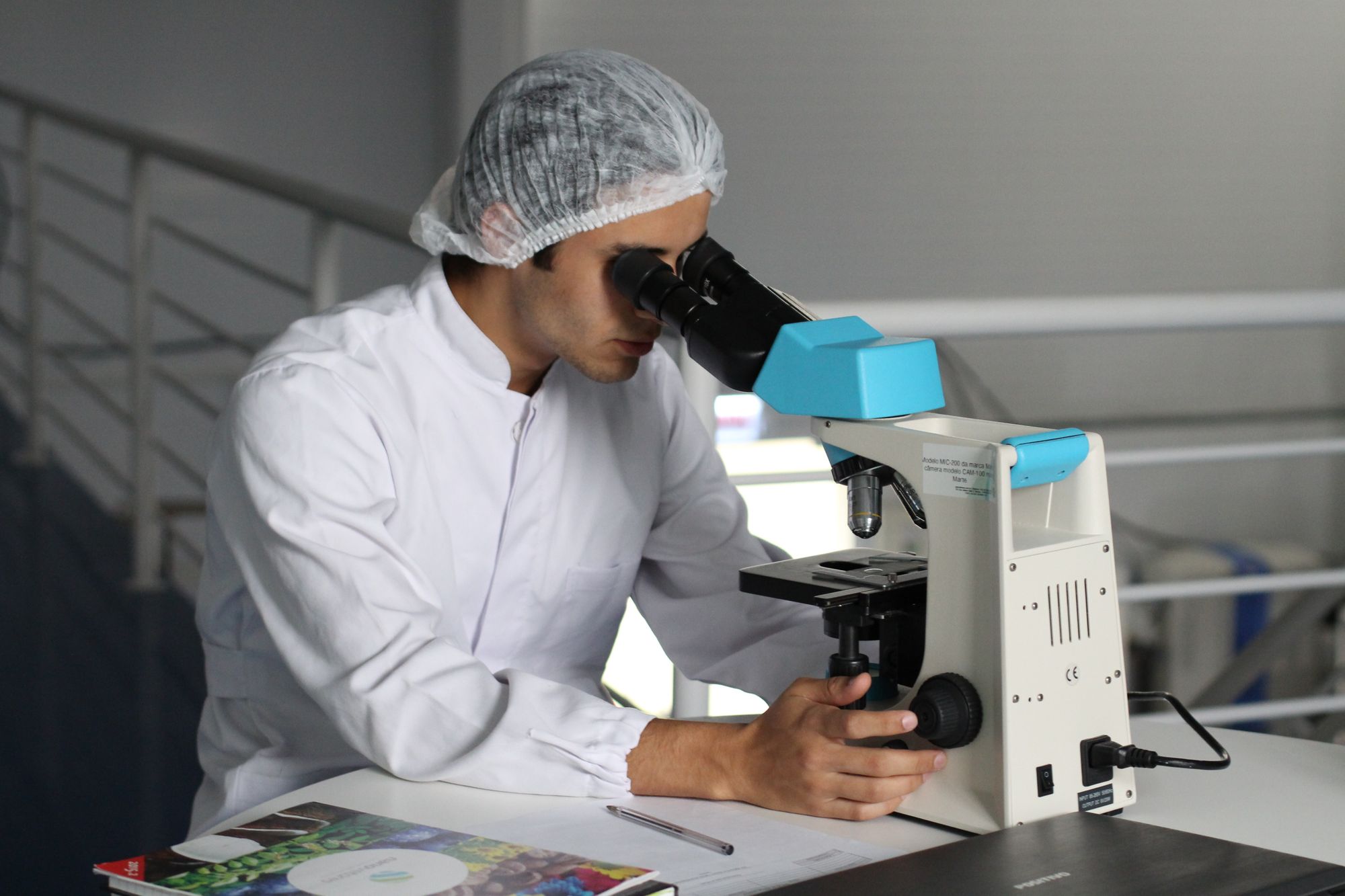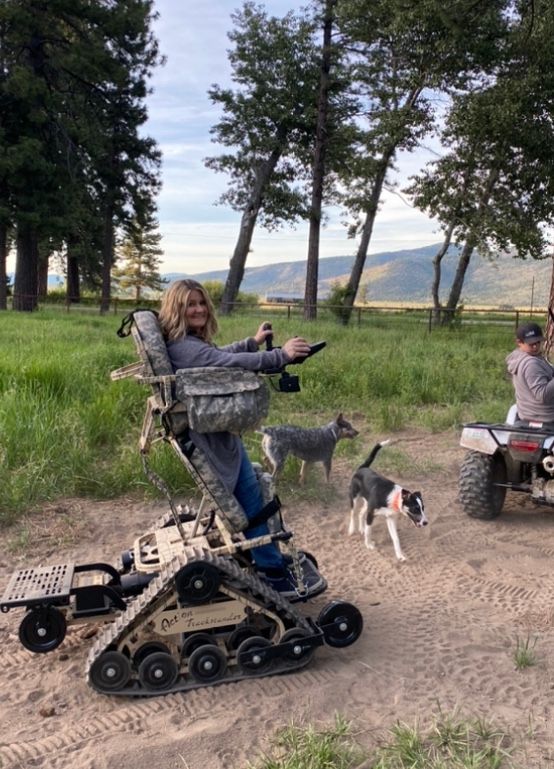Amyotrophic Lateral Sclerosis (ALS), also known as Lou Gehrig’s Disease, is a progressive neurological disease that over time causes loss of muscle control.
ALS gradually destroys nerve cells (motor neurons) that are in the brain and the spinal cord, slowly deteriorating the ability of patients with the disease to move, and eventually paralyzing them. As the disease progresses, ALS impacts the control of muscles responsible for movement, speech, eating and breathing.
There is currently no cure for ALS, and only a few treatment options are available for people that are affected by this disease.
It’s estimated that around 80% of people that have an ALS diagnosis die within 2-5 years of finding out about their condition, and every 90 minutes someone is diagnosed with ALS or passes away from it 1.
ALS Symptoms & Signs
ALS symptoms can be experienced differently from patient to patient, and are determined by which neurons and body regions are affected by the disease.
Common ALS symptoms and signs include:
- Muscle twitching
- Loss of muscle strength
- Difficulty swallowing
- Slurred speech
- Difficulty breathing
- Difficulty walking
- Falling and tripping
- Tightness in muscles (spasticity)
- Cramps
- Difficulty maintaining a straight posture, or holding the head up
ALS Risk Factors
Several risk factors that have been suggested to be connected with ALS:
Age - The risk of ALS becomes larger with age, and is most common in people 40 years and older 2.
Sex - Prior to the age of 65, more men develop ALS compared to women 3 (although this variance is slight). After the age of 70, the difference in risk based on sex dissapears.
Heredity - Between 5 to 10% of ALS patients inherit the disease, distinguishing their condition as familial ALS.
Genetics - There is evidence that the two major genes that contribute to ALS are the C9OFG72 and the SOD1 genes. While there are a number of other genes connected to ALS, mutations in these two specific genes 4 have the strongest correlation with developing the disease.
More information on which gene presence may increase the risk of developing ALS can be found on the ALS genetics database, available here.
It has also been suggested that environmental factors may trigger the development of ALS:
Smoking - It is considered to be the only probably environmental risk factor for ALS. Particularly, the risk appears to be greater for women, especially those that have passed menopause.
Military Service - Certain studies have shown that veterans may be at an increased risk of developing ALS. However, it’s not entirely certain which part of military service may trigger the disease.
It’s possible that exposure to chemicals, injuries, infections, and physical and mental stress may be contributing factors.
Exposure to Environmental Toxins - There is evidence that suggests exposure to lead may be connected to ALS. While many studies have been conducted, there isn’t a single chemical, element or agent that has shown a consistent association with ALS.
Different Types of ALS
ALS can be categorized into two types - sporadic or familial.
Sporadic ALS: This type of ALS accounts for between 90-95% of cases 5. It is defined by occurring at random, and lacking any significant factors of cause or risk.
Familial ALS: The remaining cases total 5-10% of ALS patients who are diagnosed with familial ALS, which is defined as having a family history of the disease. Typically, people with this type of ALS experience their first symptoms in their late forties or early fifties. The probability of an ALS patient’s child inheriting the disease is 50% 6. It is rare to see patients with familial ALS exhibit symptoms in their childhood or as teenagers.
The number of gene mutations in both sporadic and familial ALS types have been increasing. Researchers are now coming to an understanding that the disease categorization may not be as certain as originally thought.
While only about 5-10% of ALS cases are diagnosed as familial, there is a likelihood that genetics have a significant impact on sporadic ALS as well. Around 60% 7 of genes that are connected to familial ALS have also been identified in cases when the disease is sporadic.
Juvenile ALS: When children, teenagers or young adults (below the age of 25) develop ALS symptoms, it is classified as Juvenile ALS 8.
Stages of ALS
ALS is a progressive disorder, meaning that the symptoms and complications become worse over time.
The rate at which the disease progresses varies between individuals, and the progression of ALS can be broken down into 4 stages:
Early Stages
The onset of initial ALS symptoms is typically distinguishable by muscle weakness, twitching, cramping, as well as loss of muscle mass (atrophy).
ALS patients generally experience these symptoms in a single region in the body, and frequently begin in the arms or legs (in which case, is often referred to as “limb onset”). This can make daily tasks such as tying shoe laces, walking up or down the stairs, or typing on a keyboard more challenging.
The muscular issues that ALS causes at this stage can have negative effects on a patient’s energy levels, mood, balance, speech, grip strength, and ability to walk.
Middle Stages
In the middle stages of the disease, the symptoms of muscle weakness and atrophy begin to affect additional parts of the body. Certain muscles may become paralyzed, while others continue to lose their strength.
Muscles that aren’t used often may become shortened, causing permanent contractures that disable joints from fully straightening.
Muscles in the throat, mouth and chest may continue losing strength, causing issues for ALS patients in speaking, swallowing and breathing, increasing the chances of choking.
Some patients may also experience intense and random periods of irresistible crying or laughter, without any particular triggers. This reaction is known as the pseudobulbar affect 9. Despite how it may seem, patients do not typically feel particularly happy or sad while experiencing this.
The reasoning and higher mental abilities of most ALS patients are generally not affected.
Late Stages
In the late stages of the disease, most muscles within the body become paralyzed. Mobility becomes severely limited, and patients require external help from a caregiver for the majority of personal needs.
Muscles that are responsible for moving air in and out of the lungs (including the diaphragm) significantly weaken, making it very difficult to breathe.
The body has a harder time getting enough oxygen, and breathing may become assisted with a ventilator. This decrease in respiration can cause the patients to experience additional fatigue, brain fog, as well as increases the risk of pneumonia.
In addition to difficulty breathing, patients will typically be unable to speak, eat or drink on their own, and are fed with a feeding tube.
End Stage
Most ALS patients will pass away due to respiratory failure, as breathing becomes progressively more difficult.
This process is gradual, and can span over many months, causing patients severe discomfort, anxiety and fear. The symptoms caused by respiratory deficiency can be partially relieved with medications, although the effectiveness can vary between patients.
In less-common cases, ALS patients can pass away from malnutrition (due to difficulty eating), cardiac arrhythmias, pneumonia, or pulmonary embolism.
There is no cure for ALS, and all cases of the disease lead to an eventual passing. However, in rare cases ALS patients have lived for decades after being diagnosed.
For example, the famous physicist Stephen Hawking has lived for more than 50 years after becoming diagnosed with the disease
ALS Diagnosis
ALS can be difficult to diagnose, because early symptoms like loss of muscle strength or twitching can point to several other diseases.
There isn’t a single test that can be used to diagnose ALS, and neurologists may require a variety of tests, exams and scans to determine whether it is indeed ALS or if it’s another disease.
However, there is a specific set of criteria that can be used to set the diagnosis, which is known as the El Escorial criteria 10.
In order to diagnose ALS, the following criteria must be met:
- Lower motor neurons (LMN) must show signs of degeneration, shown with clinical, neuropathologic, or electrophysiological exams.
- Upper motor neurons (UMN) must show signs of degeneration, shown with a clinical exam.
- Progressive spread of signs with a region, or to other regions in the body
- Lack of evidence that other diseases are present, confirmed with electrophysiological, pathological, and neuroimaging exams.
Tests Used to Rule Out ALS
It can be extremely difficult to diagnose ALS in its early stages, as the symptoms and signs can be very similar to other neurological diseases. Neurologists may require a variety of different tests to be done prior to setting the diagnosis.
Some of the tests to rule out ALS include:
Magnetic Resonance Imaging (MRI) - this non-invasive imaging technology is used to produce detailed three-dimensional images of the brain and spinal cord. An MRI exam can help doctors identify other conditions or diseases that may be behind the symptoms, such as cord tumors or herniated disks.
Electromyogram (EMG) - to conduct this test, the physician inserts a needle electrode into various muscles around the body. The electrical activity of the muscles upon contraction and rest is then monitored and evaluated by the doctor. EMG can allow doctors spot abnormalities within the muscles, helping them to diagnose ALS, or eliminate it as a possibility.
Urine and Blood Exams - doctors may evaluate samples of blood and urine to help them rule out other possible causes that may be behind the symptoms the patient is experiencing.
Study of Nerve Conduction - this test is used to evaluate the ability of nerves to send signals to muscles across different areas of the body. It can help doctors identify if other nerve related issues are present (such as nerve and muscle damage or diseases).
Muscle Biopsy - In case the doctor has reason to believe that the cause of symptoms is a muscle disease instead of ALS, the patient may be advised to undergo a muscle biopsy. This process involves the removal of a small portion of muscle tissue from the affected area (while under local anesthesia), which is later sent to a laboratory for evaluation.
Lumbar Puncture - Also known as spinal tap, to perform this procedure a physician inserts a small needle between two vertebrae in the lower back in order to extract a sample of the spinal fluid, after which it is sent to the laboratory for testing.
ALS Treatments
Although there is no current cure for ALS, scientists around the world are on a mission to slow the progression of this deadly disease in a race to find a cure.
At the moment it’s not completely clear what causes ALS, although a family history check can determine whether the onset of the disease is sporadic or familial in nature.
Treatments to partially control the symptoms, delay complications, and boost the quality of life of ALS patients are available, although the results and effectiveness varies between patients.
Some of the treatments include medication to slow the progression of nerve damage, speech and physical therapy to help with mobility and verbal communication, nutritional support, and breathing support.
Currently there are only two U.S. Food & Drug Administration approved treatments for treating ALS:
Rilutek (riluzole) - this medication was approved by the FDA in 1995, and helps to delay the worsening of ALS, as well as prolong life of patients with this terminal disease. Rilutek works by hindering the activity of glutamate, which is a natural substance that occurs in the brain and the spinal cord.
Rilutek is administered orally in the form of pills, and has known negative side effects that include dizziness, changes in liver function, and gastrointestinal issues (such as vomiting or diarrhea).
Radicava (edaravone) - this medication is a lot newer than Rilutek, and was approved by the FDA in 2017. Currently the treatment is only available in very few (first world) countries, including the U.S, Canada, Japan and South Korea.
Radicava works to diminish the oxidative stress in the body, which is at excess levels in patients with ALS. Oxidative stress is one of the central contributory factors that results in the deterioration of motor neurons.
At the start of treatment, patients receive the medication daily for two weeks, followed by another two week rest. Following that, daily infusions are administered for 10 day periods, while the rest period following is two weeks as it is at the start.
Radicava is administered with an intravenous infusion. It takes around an hour to complete an infusion of this medication, and the dosage of every infusion is 60mg.
The annual cost of treatment 11 with this drug is estimated to be around $145,000, and each individual infusion costs $1,000. However, the actual out-of-pocket costs for ALS patients may vary depending on whether or not they have health insurance, as well as the specifics of their plans.
Assistive Tools and Technology for ALS
As the disease progresses, the worsening symptoms and complications make it challenging for ALS patients to live comfortably. For this reason, a range of assistive tools and technology has been created to help patients improve their mobility and manage other symptoms.
Some assistive ALS equipment includes:
Power Wheelchairs - When the disease progresses to a point where the patient is no longer able to walk, a power wheelchair can help bring back a great level of their mobility. Medicare, as well as certain insurance policies provide coverage for patients that need this crucial piece of equipment.
Wheelchair Ramps - While power wheelchairs help patients move around on flat surfaces, navigating around a home can still be a challenge for most patients. Wheelchair ramps are a relatively inexpensive way of further improving mobility of patients, as they can help to maneuver over obstacles, or go up and down the stairs.
Eye-Gazing Devices - As the disease progresses, muscles involved in speech eventually become paralyzed or extremely weak, causing patients to lose their ability to verbally communicate.
A range of eye-gaze devices have been developed to improve communication abilities of patients when this stage in the progression is reached. In order to use eye-gaze equipment, affected individuals must be able to control the muscles responsible for eyeball movements.
These devices sense movement, activating phrases, letters or words on a computer monitor, which are then spoken out loud helping the patient communicate with those around them.
Speech-Generating Devices (SGD) - The majority of ALS patients will face difficulty with speech or mobility as their disease progresses. In a lot of cases, patients eventually lose their ability to verbally communicate and control their limbs.
With the help of speech-generating devices, patients can continue communicating with other people. These devices include a wide range of assistive equipment and systems, including sign language, picture or symbol boards, and electronic devices that synthesize speech.
Quick Facts About ALS
- ALS affects as many as 30,000 people in the United States
- Around 5,000 people get diagnosed with ALS every year
- The risk of developing ALS is higher for people over the age of 60
- The average lifespan of an ALS patient is 2-5 years after hearing about their diagnosis
- There are only 2 FDA approved treatments for ALS (Radicava and Riluzole)
- Veterans, first responders, and and professional athletes are at a higher risk of developing the disease
ALS Clinical Trials Registry
At Clara Health, we have our own [FREE] ALS Clinical Trials Registry where you can stay updated on the latest clinical studies for ALS.
Our team will work with you to help you find a treatment that suits your situation best in your ALS journey.
About Clara Health
Clara Health is a patient-centered healthcare platform that helps patients find relevant research studies and clinical trials. We believe that anyone should be able to access the most advanced healthcare and we do everything to make this process as seamless as possible.
Want to see what Clara can do for you?
- Filter through 50,000+ clinical trials to find the studies that fit for you (FREE)
- We are by your side at all times and offer personal support for finding the best clinical trials
Additional information on clinical trials & research studies:
1 "Who Gets ALS? | The ALS Association." https://www.als.org/understanding-als/who-gets-als.
2 "Risk factors for amyotrophic lateral sclerosis - NCBI." 12 Feb. 2015, https://www.ncbi.nlm.nih.gov/pmc/articles/PMC4334292/.
3 "Amyotrophic Lateral Sclerosis (ALS) Fact Sheet | National ...." 22 Jun. 2020, https://www.ninds.nih.gov/Disorders/Patient-Caregiver-Education/Fact-Sheets/Amyotrophic-lateral-Sclerosis-ALS-Fact-Sheet.
4 "SOD1 gene - Genetics Home Reference - NIH." https://ghr.nlm.nih.gov/gene/SOD1.
5 "Genetics of amyotrophic lateral sclerosis: an update - NCBI." 13 Aug. 2013, https://www.ncbi.nlm.nih.gov/pmc/articles/PMC3766231/.
6 "Diseases - ALS - Causes/Inheritance | Muscular Dystrophy ...." https://www.mda.org/disease/amyotrophic-lateral-sclerosis/causes-inheritance.
7 "Scientific Focus Areas - Genetics - The ALS Association." http://web.alsa.org/site/PageNavigator/ALSA_research_focus_areas_genetics.
8 "Juvenile ALS: Onset Before The Age of 25. | Alstreatment.com." 27 Oct. 2019, https://alstreatment.com/juvenile-als/.
9 "Pseudobulbar affect - Symptoms and causes - Mayo Clinic." 16 May. 2018, https://www.mayoclinic.org/diseases-conditions/pseudobulbar-affect/symptoms-causes/syc-20353737.
10 "A revision of the El Escorial criteria - 2015 - WFN-ALS." http://www.wfnals.org/downloads/A%20revision%20of%20the%20El%20Escorial%20criteria%202015.pdf.
11 "NeuroBreak: ALS Drug's $145K Price Tag; FDA Spotlights ...." 9 May. 2017, https://www.medpagetoday.com/neurology/generalneurology/65144.



